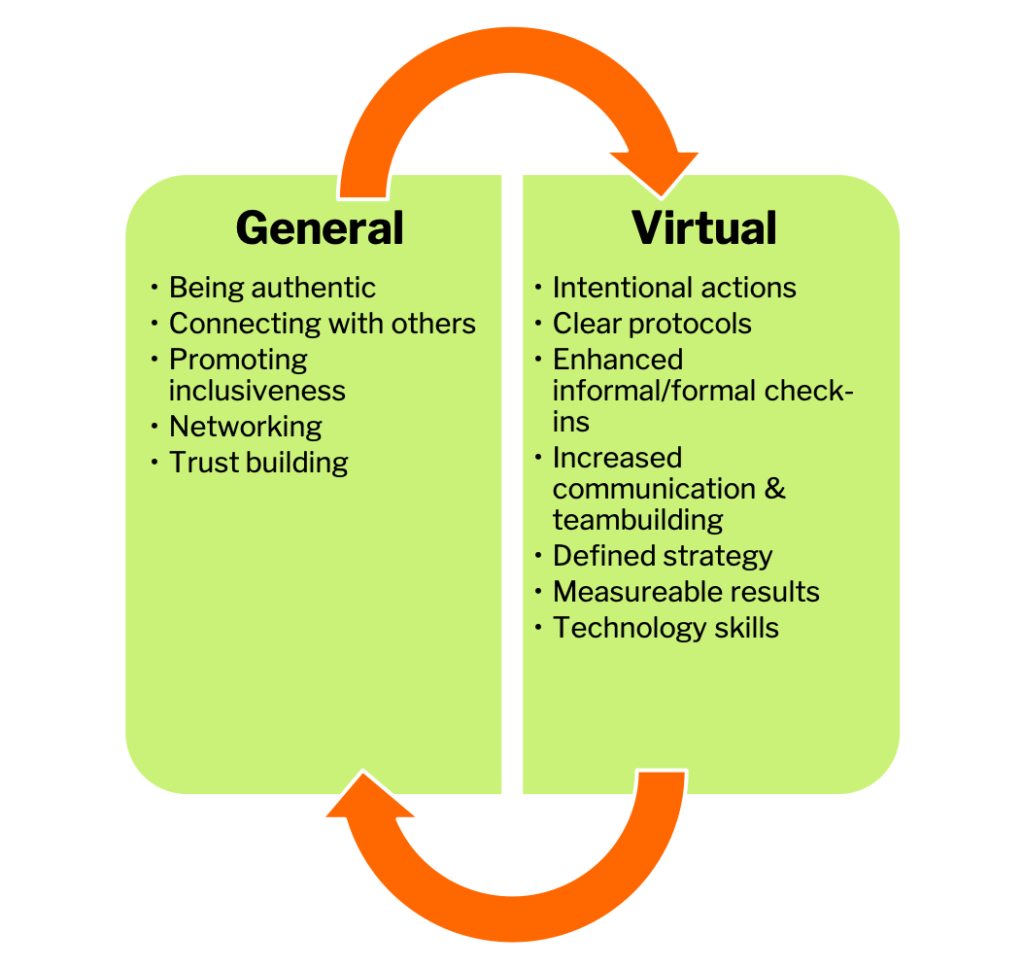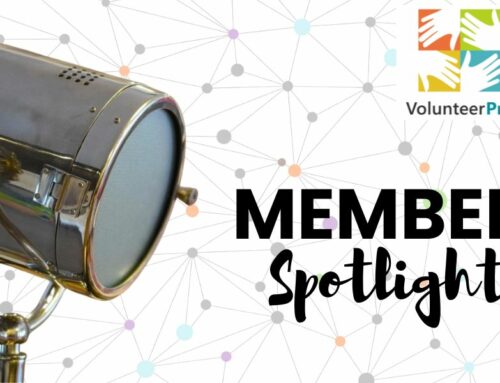 Building a Sense of Volunteer Community During COVID-19
Building a Sense of Volunteer Community During COVID-19
Lately, we’ve been recommending that you keep your volunteer community close during COVID-19. We’ve been emphasizing this for a few reasons.
First, because it’s a great time to support your volunteers as much as they’ve supported you over the years. Volunteers, like everyone else, are feeling the impacts of the stress of the pandemic and of staying home. Volunteerism has well-documented health benefits for those who maintain engagement.
Volunteering can help:
- Reduce Stress
- Combat Depression
- Prevent Feelings of Isolation
- Increase Confidence
- Give a Sense of Purpose and Meaning
- Ignite Passion
- Make You Happy
In addition, fostering a sense of community in your volunteers can keep them engaged now and coming back to help when your agency resumes normal operations.
While we have little research to refer to when it comes to communications with volunteers during a pandemic, there is evidence that when volunteers feel they have a voice in the organization’s operations and are able to keep an open line of communication regarding challenges, they are more likely to be satisfied with their experience.
So, whether you plan to keep virtual volunteer roles active during this crisis — or you will be pushing the pause button on many regular volunteer roles — it makes sense to maintain communications with your volunteer community.
But, how do you accomplish this? For many organizations, building a sense of community is accomplished through face-to-face interactions in the hallway, break room, in meetings, and on the job. Volunteers and employees are able to catch up, check in, and socialize a little. Many small micro-interactions build trust and a sense of esprit de corps.
This isn’t as easy to do online, but it is possible.
In fact, while there are real differences between face-to-face and virtual communications. However, face-to-face isn’t always the clear winner. Consider the following pros and cons.
The Differences Between Virtual and Face-to-Face Communications
| Virtual | Face-to-Face |
| Geographically dispersed teams have one place to communicate | Must travel to central meeting location |
| New people can integrate and become productive faster | Need to wait until meeting for introductions |
| Access to global best practices & lessons learned | Best practices generally stay within silos |
| Place to generate new knowledge & capture existing knowledge | Knowledge kept with individuals |
| Trust is more difficult to establish | Facial expression, verbal & non-verbal cues help cultivate trust |
| Can collaborate across time & space, but time zones create challenges | Less complicated scheduling |
| A-synchronous communication can speed up solutions | Just-in-time collaboration is often easier |
| Culture is determined by group | Culture is determined by organization |
| Data mining | Analog meeting notes |
| Increased work efficiency | Increased communication efficiency |
| Anonymity &/or confidentiality | Less “safety” with face-to-face sharing |
| Introverts have more time to think through answers & are more likely to participate | Introverts less likely to participate unless facilitated |
| Job satisfaction decreases | Job satisfaction can be more easily determined & corrected |
| Role & goal clarity drop | Easier to establish roles & goals collectively |
| Leader effectiveness decreases | Easier to lead |
| Organizational citizenship drops | Easier to keep together |
Striking a Balance in Your Volunteer Community
We’ve also written about how to boost the impact of volunteer communications when working remotely.
But could all this communication be too much a good thing?
With more and more people meeting via video conferencing services, researchers have noted a new phenomenon called “Zoom fatigue”. Participants are beginning to feel the effects of online meetings, due to the inability to read facial cues and the stress of paying attention to multiple video thumbnails during a broadcast. Apparently, frequent online meetings can take its toll on us as our brains struggle to keep up with social cues that are recognized more easily in person.
However, for people who have neurological difficulty with in-person exchanges, video meetings have had the opposite effect. Because only one person can speak at a time, cognitive input is more limited and the mental load more manageable.
To strike a doable balance for all, consider making some changes to how you conduct video conferences.
- Have participants share their screen if it’s a small group of 9 or less people so the screen isn’t flooded with tiny thumbnails.
- If visuals aren’t needed, and you have a lot of people joining you, try conducting your meeting without video or with presentation slides as your visuals.
- Or, make it OK not to have your video on. Instead, recommend that folks who are feeling overwhelmed, mute their video and turn it on when they want to address the group
- To increase the health benefits of your conference calls, try conducting them as small walking meetings. Research shows that walking during meetings actually increase creativity. And, if someone can’t get out of the house, ask them if they’d be willing to take meeting minutes (or designate someone for that call), so that you capture all your great ideas and decisions.
- Also, send any materials for review ahead of time. It’s difficult to see small text, so give folks the option of adjusting the view from their own desktop.
- If you want to collaborate online, set up a Google doc that you can edit on the fly. Ask participants to log in and follow along with the changes together.
By being sensitive to the needs of your diverse volunteers, you can make your meetings more enjoyable and productive.
Building a Sense of Community within Remote Volunteers
While volunteers may be working from separate locations, that doesn’t mean that they can’t feel connected with one another.
Need convincing? Check out any dating app and you’ll see how quickly humans can form bonds even online.
But, building a sense of group cohesiveness and community doesn’t happen simply by having software available. It takes some smart strategy.
Communications theory has shown that both our physical and our mental contexts helps us interpret information. If we are able to build trust through a shared context, we are able to exchange information and arrive at shared meaning. If you cut off shared context, you can’t find shared meaning.
In addition, about a decade ago, the phrase “digital body language” was coined to describe the amalgamation of all digital user activity (views, comments, profile info, searches, downloads, etc.). Reviewing the online activity of our followers helps us “read” behavior we can’t see in front of us. It also helps us hone in on what is relevant to users.
The downside is it can’t be read if there is no data. So, it helps to set a plan to review the engagement data for your emails, website, social media account, and any online communities.
Establishing a shared context is the critical foundation to successful collaboration. Digital communication makes establishing this context more challenging. So, when you take care to pay attention to “digital body language” and ask volunteers to share what’s going on in their environment during gatherings online, you not only generate helpful clues about their interests you also co-create a shared mental context, or point of view, that helps teams create meaning together.
While most leadership skills are consistent (save the skills of working with each technology platform), leadership in the online environment requires special attention to certain areas. While the following are important in any context, their need is heightened when working online.
Online Leadership Skills
The role of a traditional volunteer coordinator who coordinates on-location volunteers varies slightly from one who coordinates volunteers digitally. So, your you must be willing to make some adjustments to your tasks and strategy to be successful.
As a community moderator, a key responsibility will be to build your online leadership skills to promote a deeper sense of connection and volunteer community. It’s a common myth that communities are self– sufficient right from the start – that you merely “set it and forget it.”
This could not be further from the truth. Launching a truly robust, high-value community requires an investment of time and energy.
Your new responsibilities might include the following …
- Nurturing members & encouraging participation
- Researching current trends and late-breaking news
- Reaching out to “super users”
- Seeding content & structured conversations
- Managing technology tools
- Managing community events
- Monitoring activity & evaluating performance action plan
Generating creative and structured conversations online is one of the most important roles for online community moderators. While you may assume that technologically skilled volunteers already know how and when to interact online, and it’s only the low-tech volunteers that need support, the reality couldn’t be further from the truth.
Productive volunteer community conversations and engagement needs proactive facilitation, and both skilled and unskilled alike need support. Planning for structured conversations can help bridge the gaps and increase the frequency, quality, and depth of interaction online.
Structured conversations include the following:
- Facilitated conversations
- Focused issue or question that is relevant to members
- Pre-determined set of guidelines
- Supporting resources sometimes provided
- Within a bounded timeframe
These conversations act as an artifact for later reference and are important for memorializing concepts and ideas that the community generates.
Volunteer community members also have important roles and responsibilities to their peer-based community. These are important to communicate to community members in the form of guidelines and regular reinforcement (or catching people doing things right). The more members are included in community planning and facilitation, the more vibrant the community will become.
Member responsibilities might include the following …
- Informal roles that are often self-selected (e.g., pot-stirrer, playful antagonist, thought leader, peacekeeper, mentor)
- Formal roles (librarian, technical steward or guru, Subject Matter Experts)
- Participate in curating, sharing, co-creating & using content & knowledge
- Recruiting & welcoming new members
- Facilitating introductions & connections
While some member roles and tasks are more influential than others, they all have a part to play in the overall success of the community.
Not all community members will participate equally either. That is to be expected, however, you can work against having too many observers and too few leaders.
Below are some reasons why members don’t participate online:
- Feel they don’t need to
- Need to find out more about the group
- Think they are being helpful by not adding confusion
- Can’t make the software work
In some cases, people don’t communicate because they don’t like the group. While there’s no accounting for taste in friends, you can take steps to address some of the key barriers listed above.
Post highly relevant and interesting content on a regular basis. Communicate norms that the community is a give/get space. Clearly explain what the community is for. Provide guideless and show examples of high-value posts in terms of content and optimal length.
Facilitate a healthy amount of networking. Tag and call out individual members and ask them to weigh in on a specific topic under discussion. Reach out and make introductions where they make sense. Ask questions for more clarification instead of always supplying quick and brief answers.
These are all ways to keep your volunteer community humming.
It’s also essential that new members get a response within 24 hours of their very first post, at minimum. The community consultancy FeverBee noted in their research that if a member receives a response within 15 to 25 minutes, there is 90% chance of a second contribution. If they get a response after the first hour, this drops to less than 60%. And, after 24 hours, only around 10% will post again. While this research focuses more on brand communities, it also is true for private communities.
People keep communicating when they feel there is someone listening.
(Note: FeverBee has also produced a free eBook, The Proven Path, that you might also use as a reference to inform your strategy. When we first launched VolunteerPro, we participated in their courses on community management and credit their strategies, in part, for our early success.)
How are You Fostering a Sense of Volunteer Community Online?
So, what about you? What have you tried so far?
And, what’s working and what have you learned?





